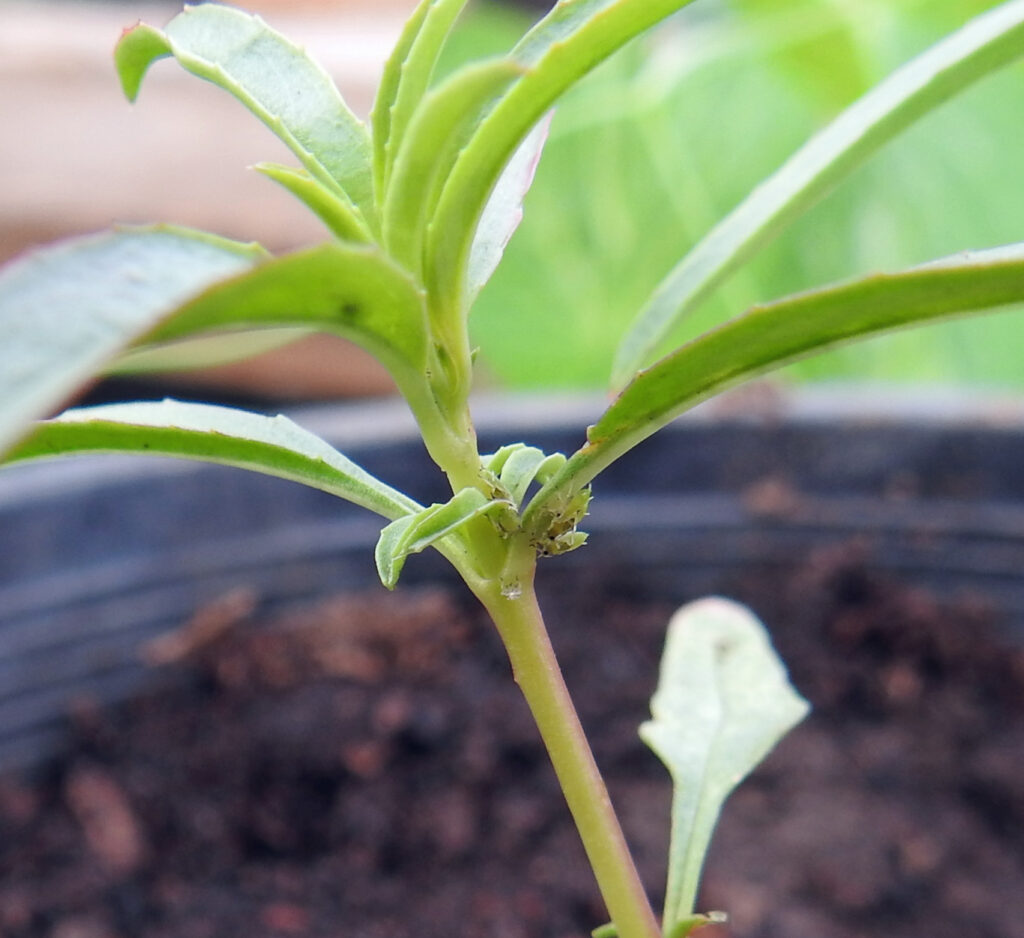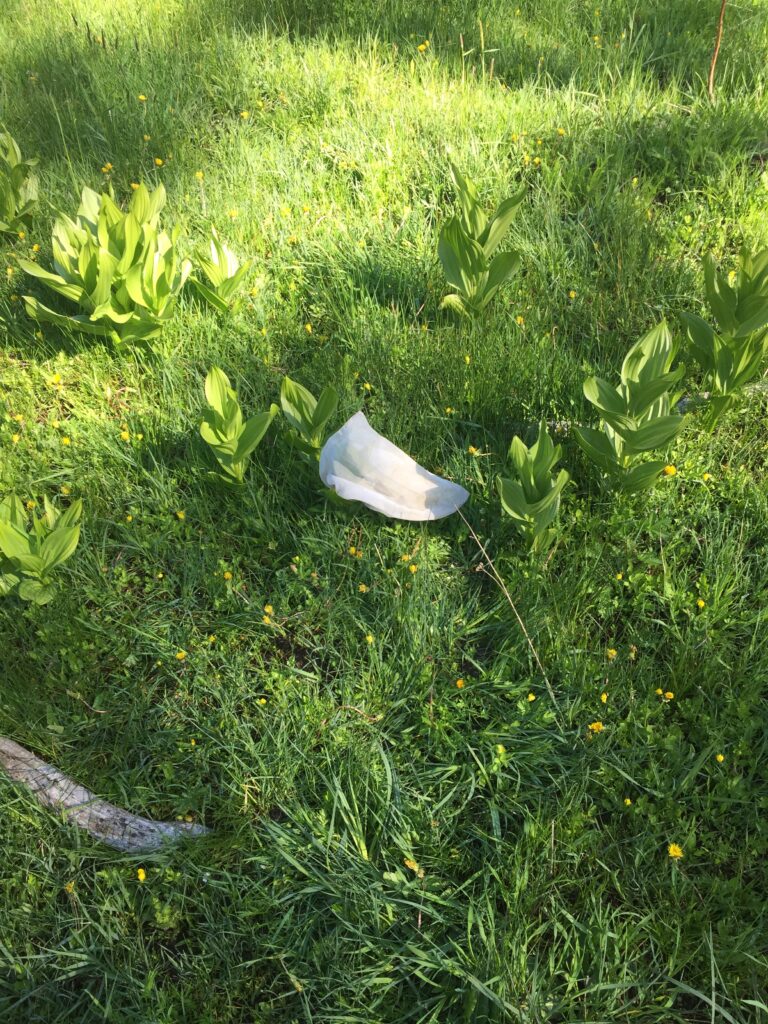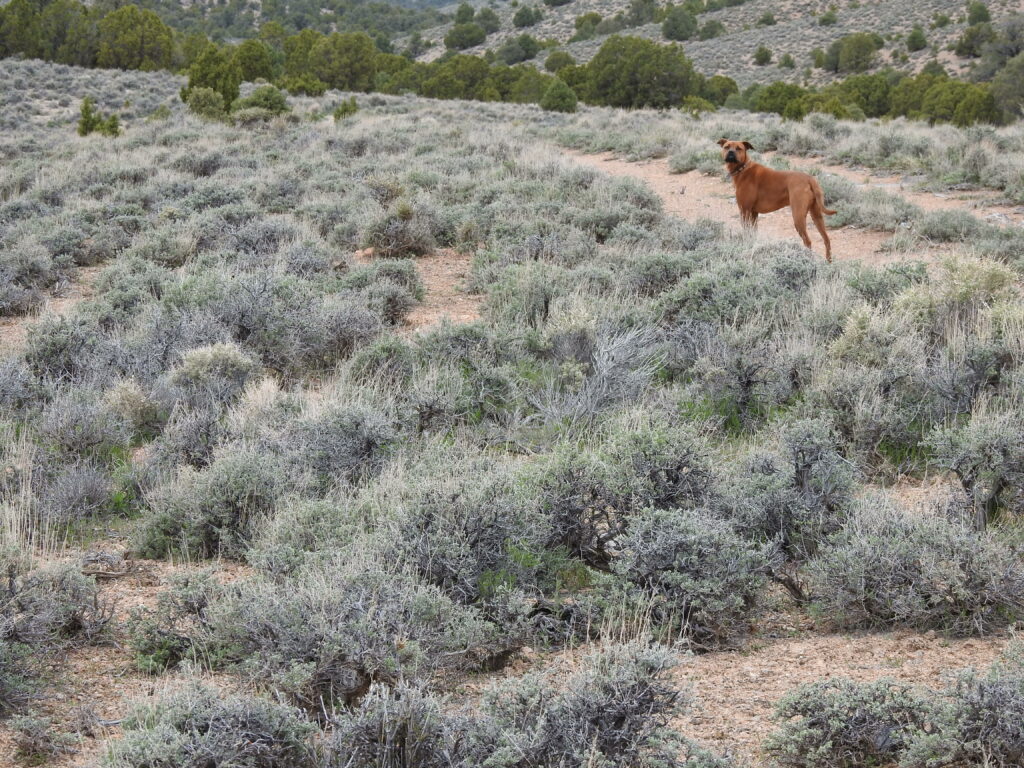I might as well continue the tradition of doing a spring aphid research update! This winter was yet another intense affair, with copious snow and rain, most of it coming late. After nearly unheard-of warmth in January, there has now been four months of cool and wet weather, including much snow and upwards of 3 meters of snow on some of my favorite collecting areas in the hills. Even today, 26 May, there is a layer of new snow on the hills surrounding our valley. Our growing season is always late here, but the cool and wet has made it even later, with the lilacs just now in bloom around town, and camas lily opening in the valley.
Aphids-wise things are of course also slow. Perhaps more than some years the slow spring has highlighted which aphids are really early-season opportunists, and which might be less worried about an early start.
I have collected some shoots of important woody host plants and attempted to root cuttings in the greenhouse. The aim is to establish these plants on our property to make in-person study of their aphids easier and more thorough. These plants were the Ribes hosts of Aphis (Bursaphis) —Ribes aureum, Ribes cereum, and Ribes velutinum — the Salix host of one of my Macrosiphum species, and the small-leafed Holodiscus from rocky slopes near here (often called Holodiscus dumosus). The Salix were the most cooperative, producing vigorous roots, and they are already growing in the soil next to the goldfish pond. All the others are less likely to root and survive, but hope remains after well over a month.

Early season collecting has once again focused on Aphis (Bursaphis) in our local area. Last weekend I found a good group maturing to alates on the developing fruits of Ribes cereum on the slopes above Abert Lake. This is interesting for two reasons. First, many of my previous samples on R. cereum were either collected from curled fresh leaves on new shoots deep in the plant canopy or were collected with my beating tray and therefore were from unknown plant microhabitats. Second, this aphid was obviously the one with short URS and long cauda that I’ve hypothesized migrates to Epilobium paniculatum. I know there are a few species of Aphis (Bursaphis) using R. cereum in one way or another, but this collection was my first concrete lead on possible niche partitioning within the host plant. Subsequently, I potted three small E. paniculatum plants and started a host transfer experiment in the greenhouse. After 5 days, the aphids are happy and healthy on the Epilobium. Time will tell, however, as aphids and plants grow.

A major planned research push for this year is resolving some of the biological questions about aphids of Holodiscus. To that end I was able to pick up some Aphis holodisci on H. discolor a few hours drive north of here and establish a host transfer experiment in the field near home onto our local Veratrum. As I’ve written elsewhere, I’m almost certain that most of the Aphis on Veratrum in the Northwest are Aphis holodisci. I was also lucky enough to get the early-season morphs of one of the Illinoia species on Holodiscus ‘dumosus’ on the steep slope above Abert Lake.
Finally, spring is perhaps the most important time to make headway on my studies of aphids on sagebrushes. The taxonomy of aphids on these plants is plagued, I think, by morphological variations induced by the extreme environments they are exposed to (i.e. snow, cold, heat, drought, extreme soil types). For example, summer dwarfism is a serious problem in taxonomy, and so are seasonal variations in cuticular pigmentation. I think taxonomy of these groups will rely on “apples-to-apples” comparisons, which in this context means specimens collected at the same time of year, in the same locations, during the same year. Ideally, I’d like a cross section of my Epameibaphis and Pseudoepameibaphis species from May, June, July, August, and September, and across many collection sites. I hope to accomplish this in time, allowing comparisons that can separate the species-related morphological variation from the variation induced by season, host plant, location, etc.

